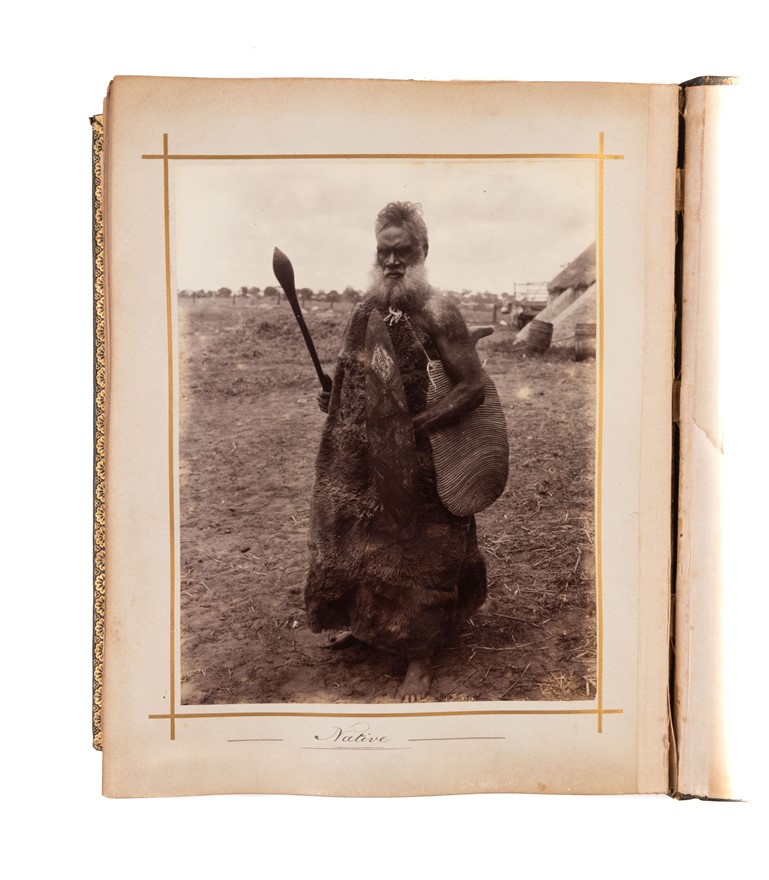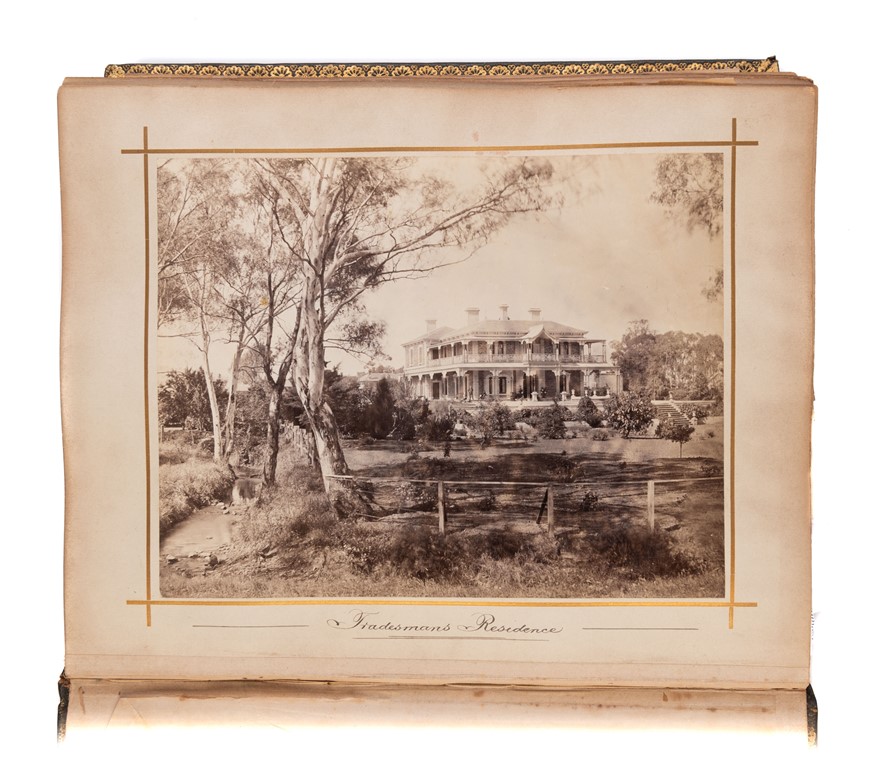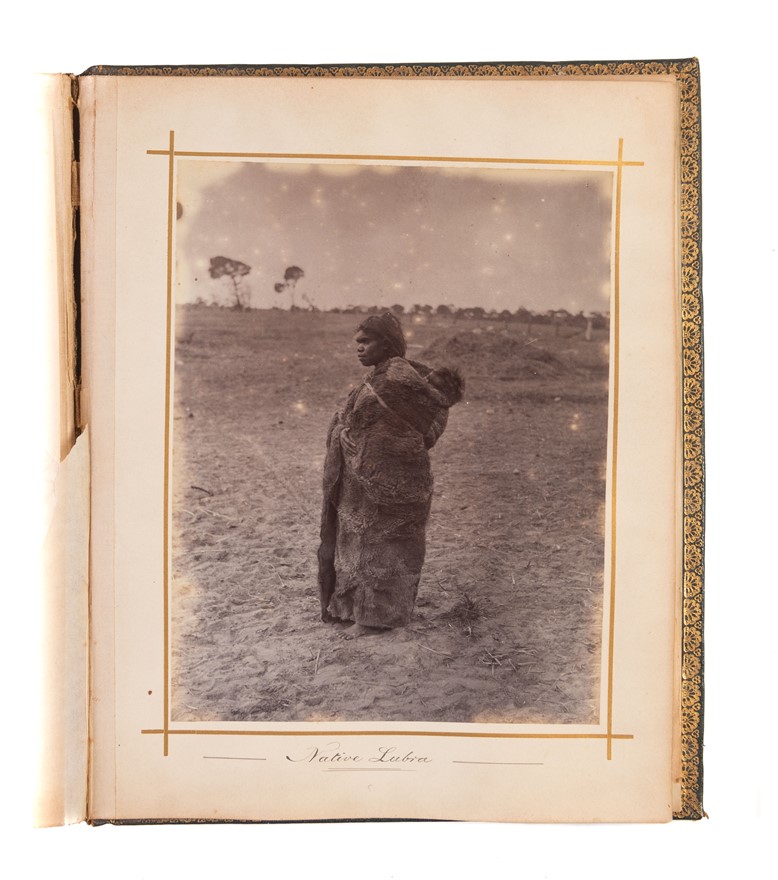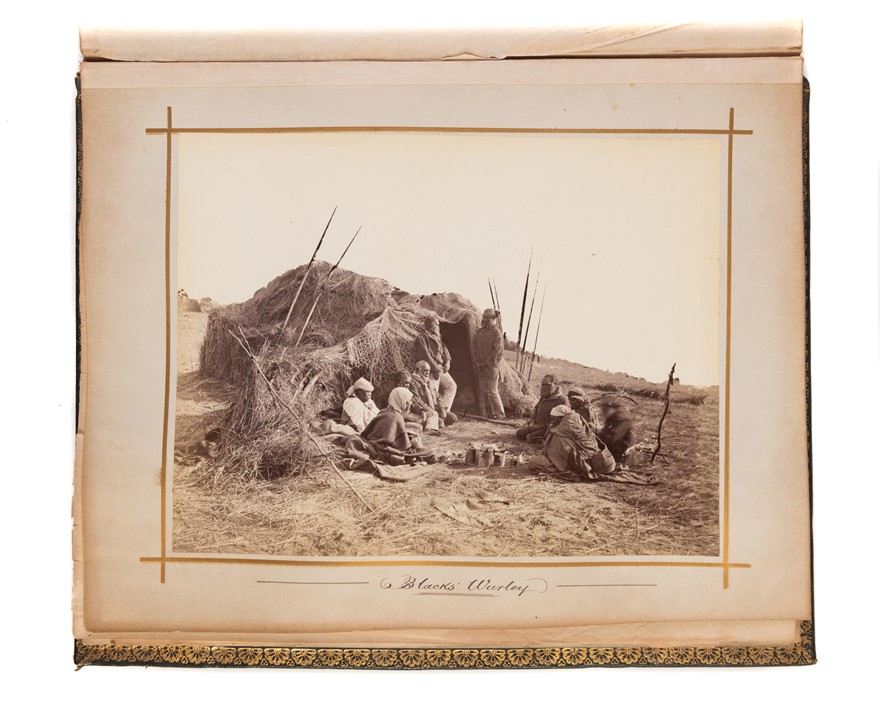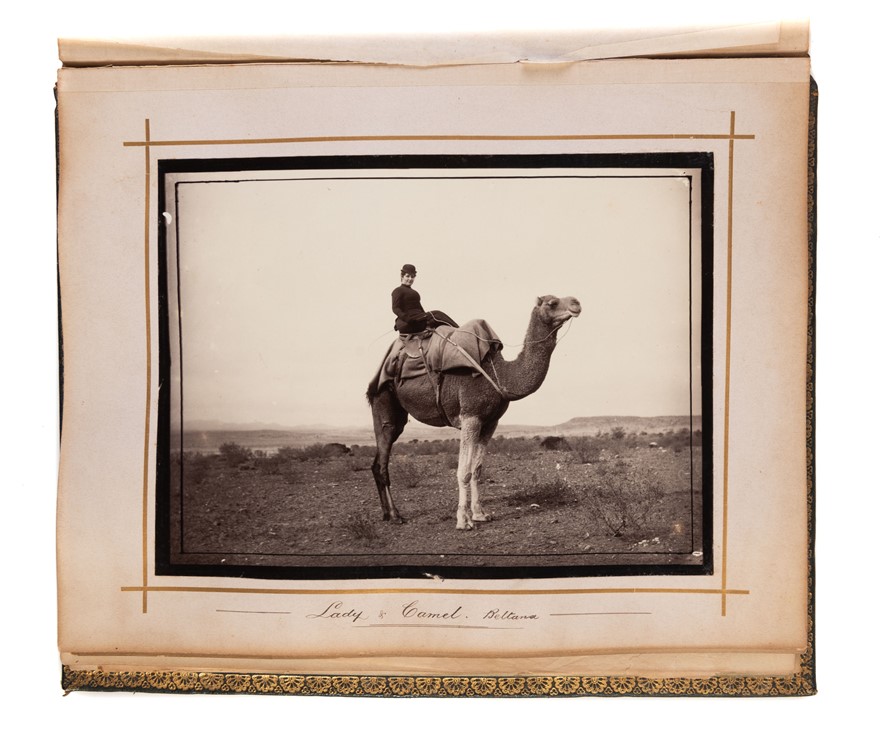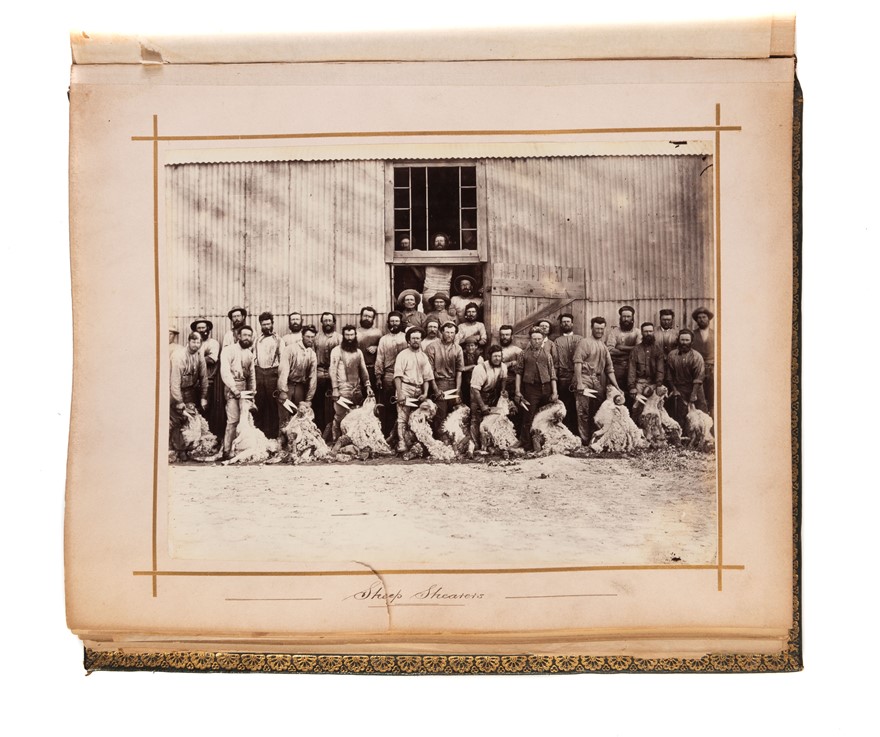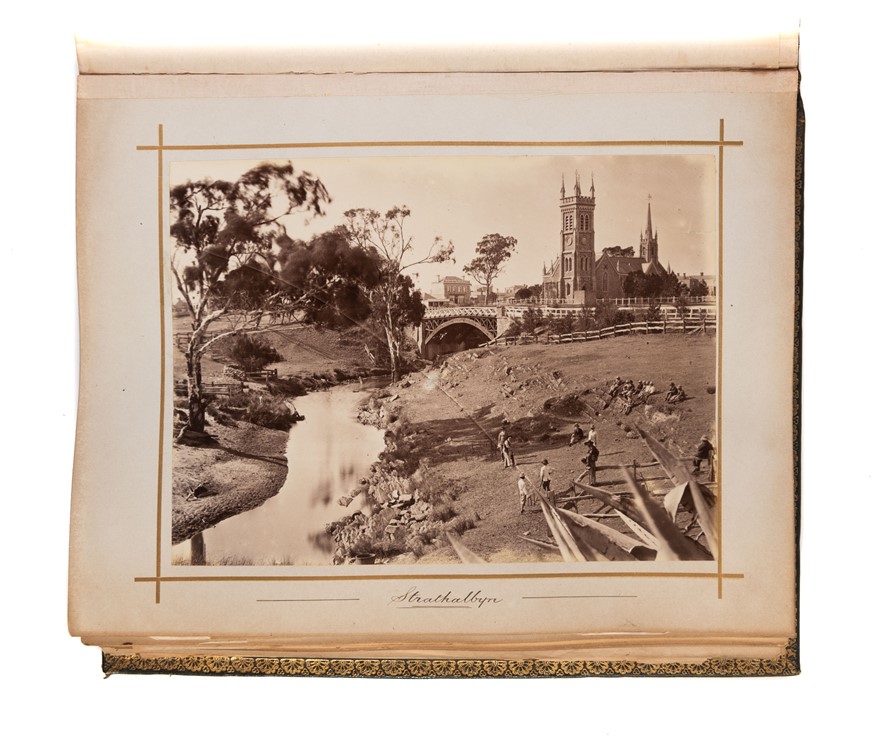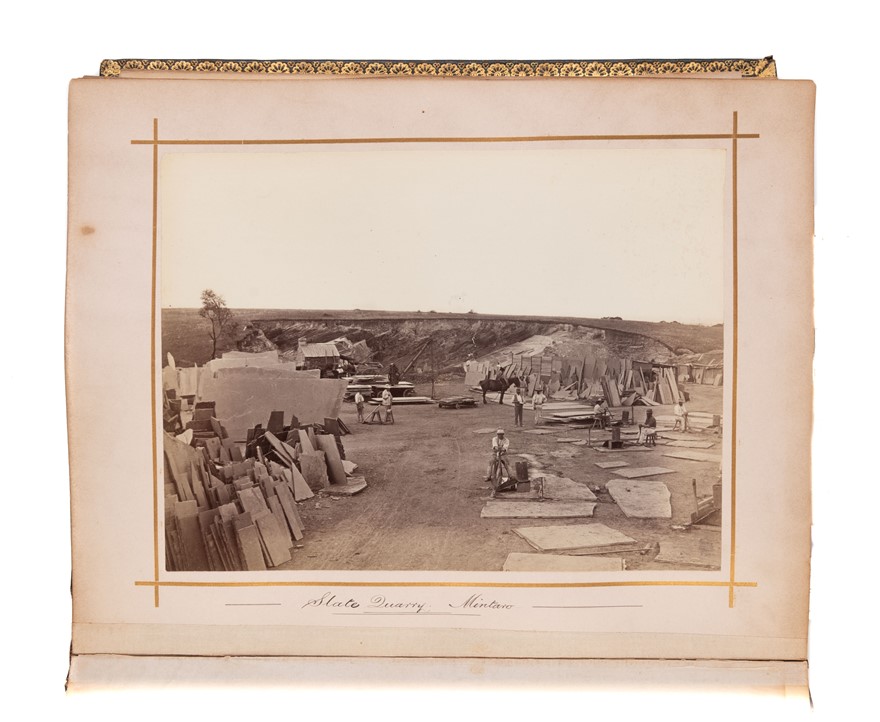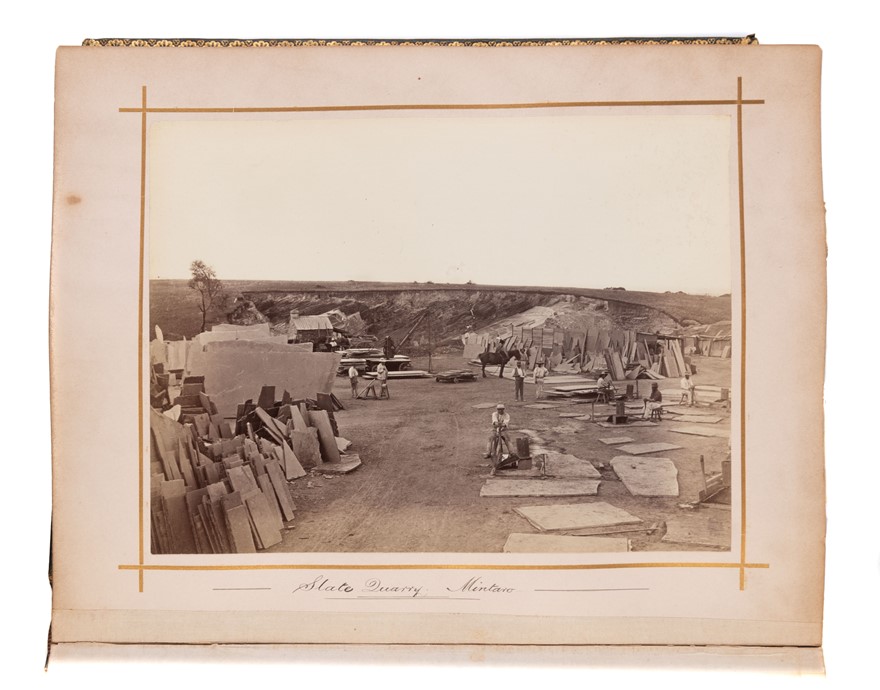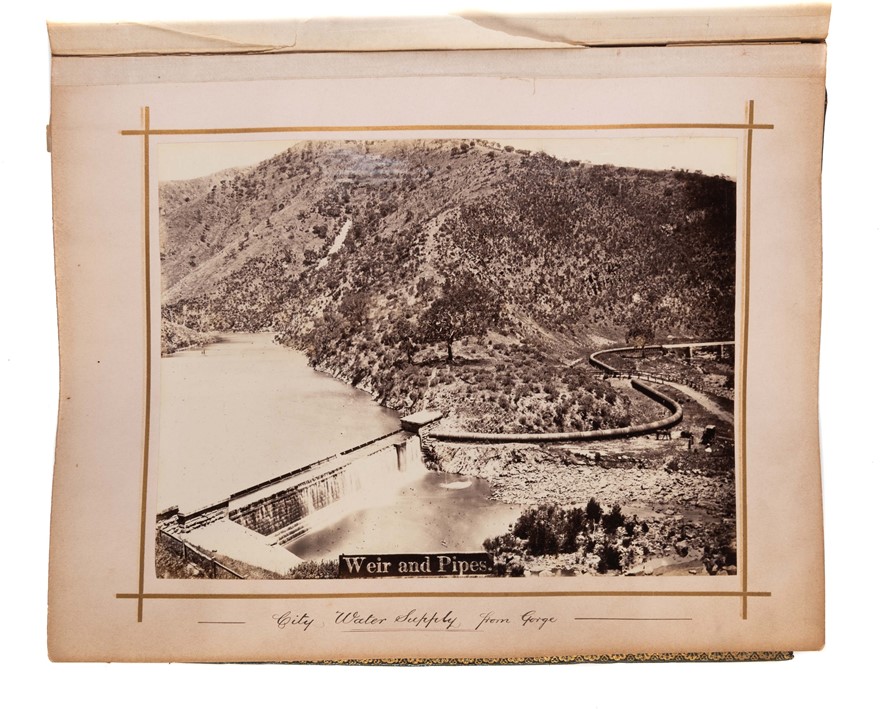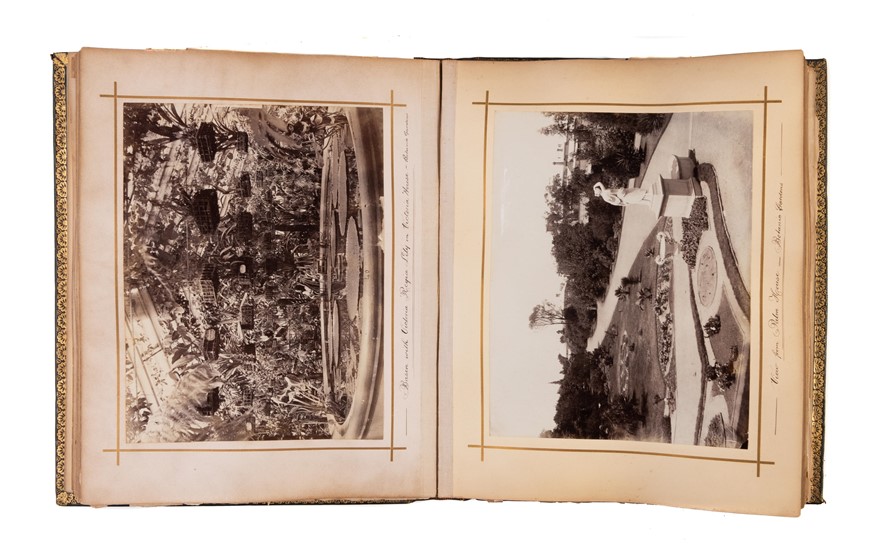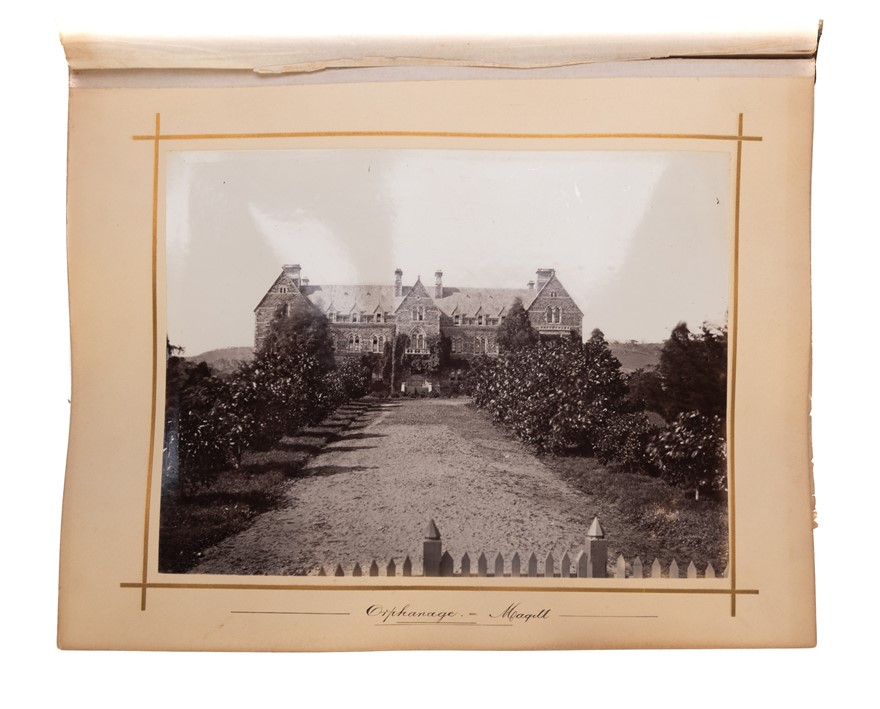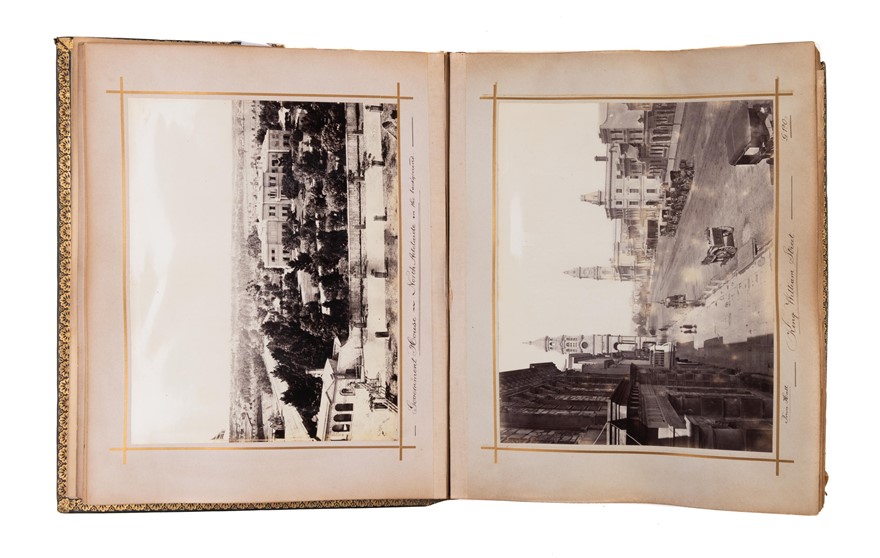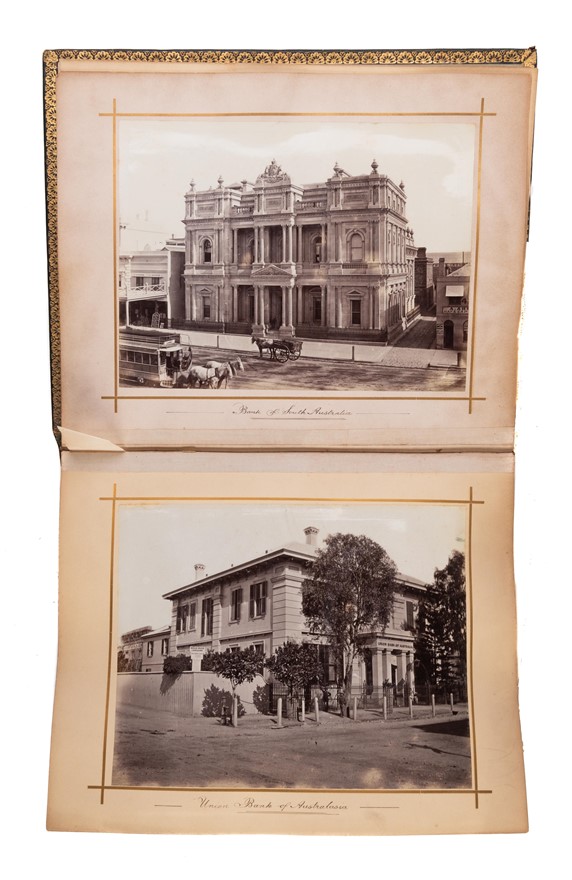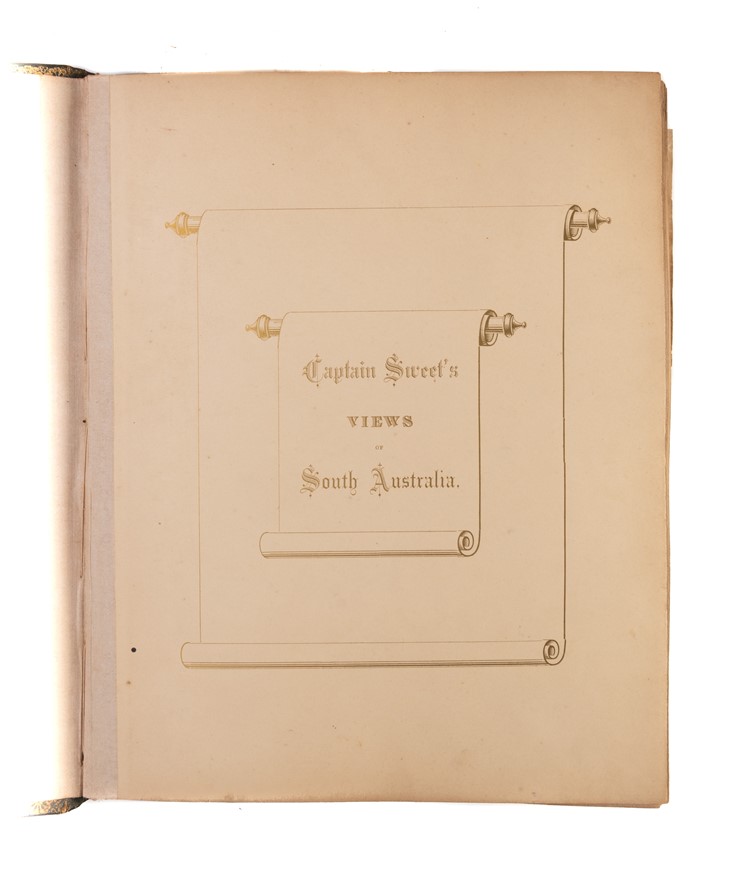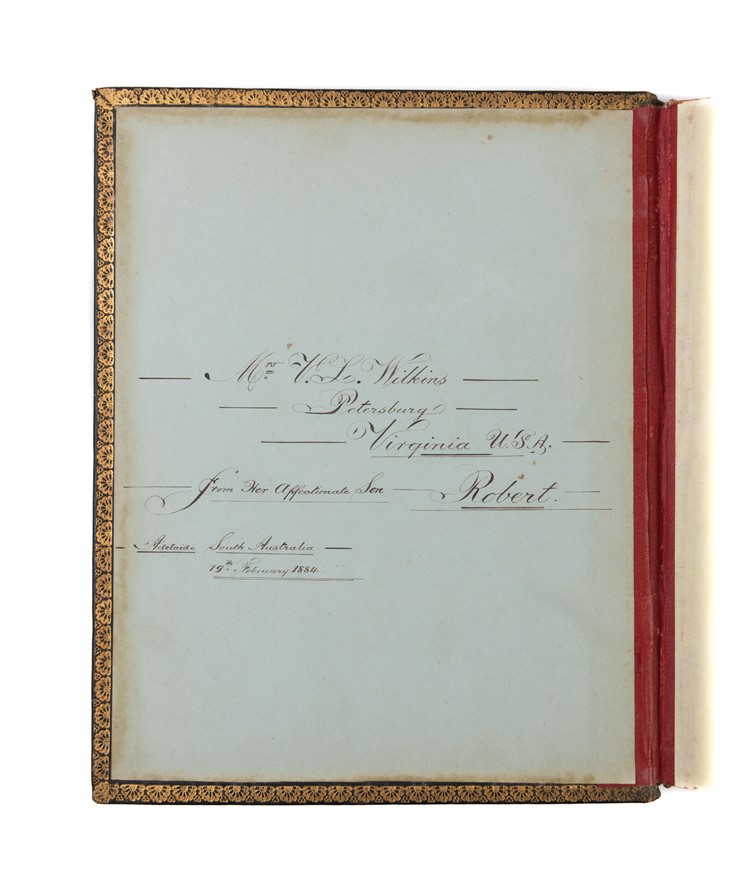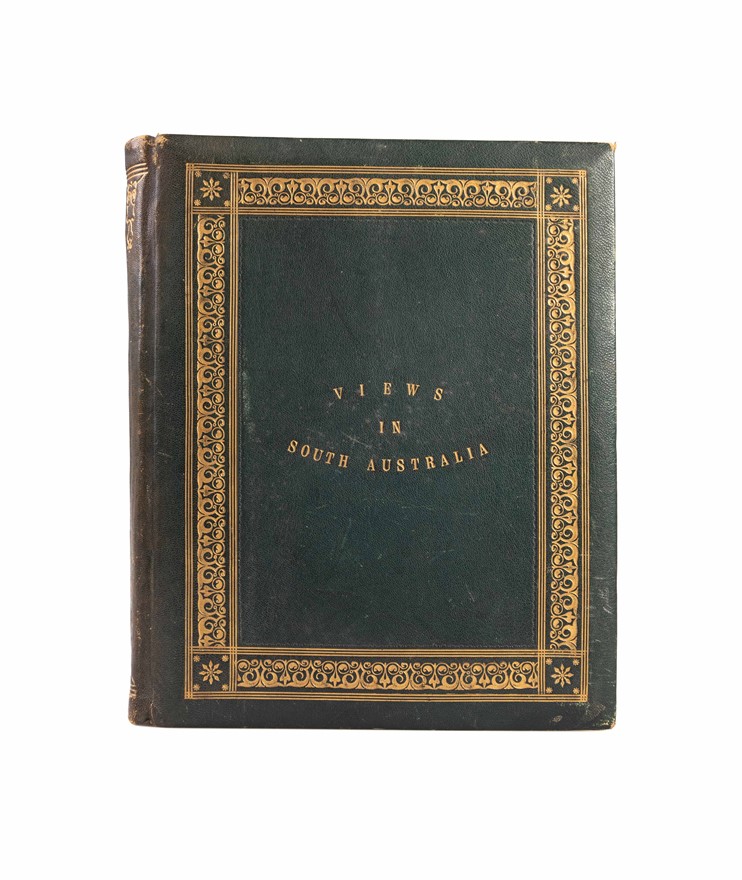Captain Sweet's Views of South Australia.
SWEET Samuel White (1884.)
£25000.00
Please contact us in advance if you would like to view this book at our Curzon Street shop.
A SUPERB LIFETIME ALBUM
Title-page printed in gold, 50 silver gelatin photographs measuring 210 by 163mm, captioned in ms. & mounted on stiff card leaves within plain gilt frames, some tissue-guards remain. 4to album. Publisher's green morocco over bevelled boards, spine gilt, broad gilt panel to covers, triple-rules and scrolling foliate roll tool, title lettered in gilt to upper board, gilt roll tool turn-ins, gilt edges. Ownership inscription on front pastedown. Slightly rubbed, card leaves a little cockled with some consequent smutting to margins, short closed tear into caption of "Sheep Shearers" but the views themselves excellently preserved with good tone, contrast and definition. 25 leaves. Adelaide, Samuel White Sweet, before
Everything about this luxurious album is a testament to the craft and care of Samuel Sweet (1825-1886), “the colony’s foremost documentary photographer of the 1870s” (ADB). Presented to “Mrs V. L. Wilkins, Petersburg, Virginia USA, from her affectionate son Robert. Adelaide, South Australia - 19th February 1884.” It was a lavish and, given its fine condition, a much-cherished gift.
Samuel Sweet’s career in the Royal Navy brought him, via the China Station, to Australia in about 1864. He was already an accomplished photographer by this stage and practised professionally in South Brisbane. He combined the two careers for the next six years, establishing studios in Rushcutter’s Bay in June 1866, and at the end of that year in Adelaide with William Gibson (a short-lived partnership). He submitted examples of his work to several exhibitions, including the Society of Arts in 1867.
He exhibited the photographs he took in the Northern Territory from the four trips he made there between July, 1869 and September, 1870 on the Gulmare. However, the loss of the ship and the Wallaroo in 1872, compelled him to abandon life at sea and start life as a full-time professional photographer focusing on city views and landscapes, both of which are evident here. His reputation advanced quickly, aided by the invention of a waxing process, which gave his photographs a finish similar to that of varnish on an oil painting. ADB also notes that “in the early 1880s he was one of the first to use the new dry-plate process.”
Sweet continued to travel, to Tasmania and, importantly, twice to Port Macleay (Raukkan, or the Ancient Way). It was on his first trip in 1878 that he took the photograph that appears as the frontispiece of George Taplin’s book on the Narrinyeri. According to a report in the Southern Argus (18 July 1878), he “also photographed the largest number of natives I saw taken together, there are between 50 and 60 in the group.” He returned to the mission at Port Macleay in November 1880 “and this time received a request from the Ngarrindjeri themselves for portraits: Frederick Taplin had written to Sweet saying that the Aboriginal people at the mission ‘would go in for having their pictures made’” (Robinson).
This album provides not only a comprehensive overview of late nineteenth-century Adelaide, but includes the high spots of Sweet’s career. It begins with Adelaide’s landmark institutions: banks, hospitals, main streets, then botanic gardens, lakes and industry such as shipping, water supply, mining and sheep (these last are particularly good). The scope then broadens to include suburban Glenelg, then to Mintaro, Bungaree, and deep into the South Australian interior at Beltana, and Farina. There are also three images from his time at the Point McLeay mission with George Taplin in late 1880. These photographs of the Ngarrindjeri people include a fine image of a group outside a wurley or Aboriginal hut; a mother in possum skin cloak with her child slung on her back; and a powerful portrait of an Aboriginal man similarly dressed, clasping a waddy or fighting club, decorated malcarra or parrying shield.
Sweet’s photographs weren’t limited to his own productions. They appear in a number of different works including Mabel and Jean Smith’s An Australian Birthday Book (Adelaide, 1883), George Taplin’s The Folklore, Manners, Customs and Languages of the South Australian Aborigines (Adelaide, 1879) and William Wyatt’s Monograph of certain crustacea ... (Adelaide, 1883).
While numerous examples of individual prints are located in Australian libraries, Sweet’s albums are very rare indeed. This album was produced towards the end of his lifetime, none of the plates here have his blindstamp, and those that do are generally agreed to have been issued after his death when his wife continued the studio for another six years. We locate one other example of Captain Sweet’s Views of South Australia at NLA, with 100 images, though those are slightly smaller - 200 by 150mm compared to our 210 by 163mm. We also find three examples of Sweet’s Album of Adelaide, its Suburbs and Botanic Gardens at the University of Adelaide, SLNSW and NLA. A copy of Sweet’s South Australia. Views in Adelaide, Suburbs and Country Districts sold at auction in 2016.
A full list of images is available on request.
Ellis, H., Intersections: Photography, History and the National Library of Australia (Canberra, 2004) p.75; Holden, R., Photography in Colonial Australia ... (Sydney, 1988), b 101, 105 & 129; Robinson, Julie, ed., A century in focus: South Australian photography 1840s-1940s (Adelaide, 2007), p.292.
.
Stock Code: 243396
